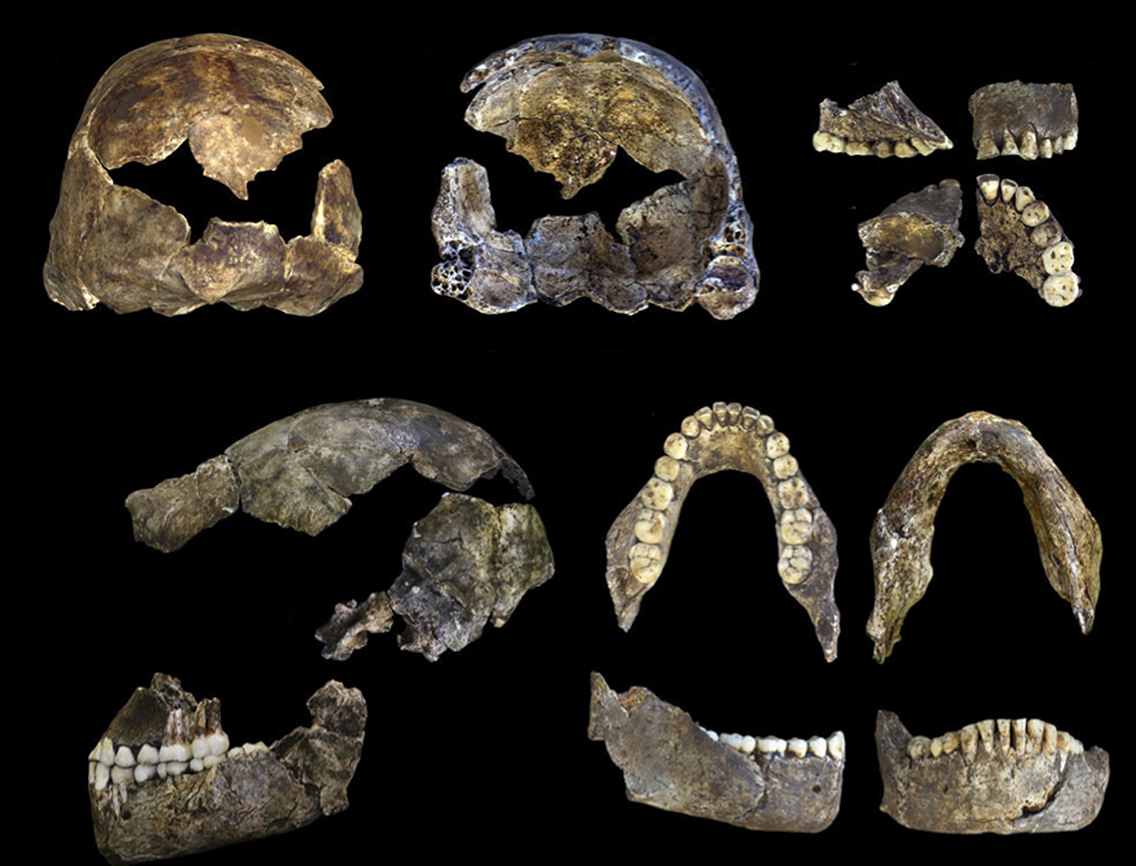
A team of researchers published papers last week on their 2017 discovery of a skull of a child belonging to the hominid species Homo naledi. The skull, which is 250,000 years old, was retrieved from the depths of a cave by paleoanthropologist Lee Berger and his team.
Berger believes that the location of the skull is a sign that the child’s corpse was intentionally buried, and that the Homo naledi may have even held funerals:
“We can see no other reason for this small child’s skull being in the extraordinarily difficult position,” said Berger.
The Homo naledi species was first described by Berger and his team, who have been working in the Rising Star cave system in South Africa extensively since 2015. The team discovered thousands of bones in the cave’s Dinaledi Chamber after having cavers traverse the incredibly narrow pathways of the cave to reach the chamber.
Upon discovering remains of the Homo naledi, Berger believed that the species had buried their dead with the intention found in funerary rituals.
“I think it’s fair to say it was controversial in 2015 to say a small-brained, primitive-looking hominin might have been deliberately disposing of its dead,” Berger said, but he maintained that “there’s been no credible evidence against that original hypothesis”.
How Lee Berger and his team found the skull of Leti, a Homo naledi child
The team has been able to trace the age of the remains to roughly 250,000 years ago, which means that the Homo naledi were living contemporaneously with humans and Neanderthals.
Two years after their initial discovery, the team ventured beyond the two chambers they had already explored and deeper into the abyssal cave.
Marina Elliott, one of the researchers on Berger’s team, was part of the exploration; she recalled how the depths of the cave were fear-inducing:
“There’s boulders that have fallen from the ceiling,” she said. “Then there’s a little bit of a drop into a crawlspace that just literally leads into a couple of small narrow passages.”
These passages are barely wide enough to fit a person’s body, and researchers were forced to orient themselves laterally and even invert their bodies to move through the chambers.
The team recovered the fragments of the child’s skull on a shelf within a narrow tunnel that tapers to 7 inches. The placement of the skull strengthened the researchers’ argument that the Homo naledi had entered the cave to find burial sites for other members of their species. When the team made their way out of the cave and began analyzing their findings, they understood that the fragments were not from multiple Homo naledi, but the remnants of one child’s skull. They named the child Leti.
The team has finally published two papers this week on Leti and the caves in which she was discovered. The researchers analyzed six teeth amongst the skull fragments to determine that Leti was between four and six years old.
See all the latest news from Greece and the world at Greekreporter.com. Contact our newsroom to report an update or send your story, photos and videos. Follow GR on Google News and subscribe here to our daily email!



